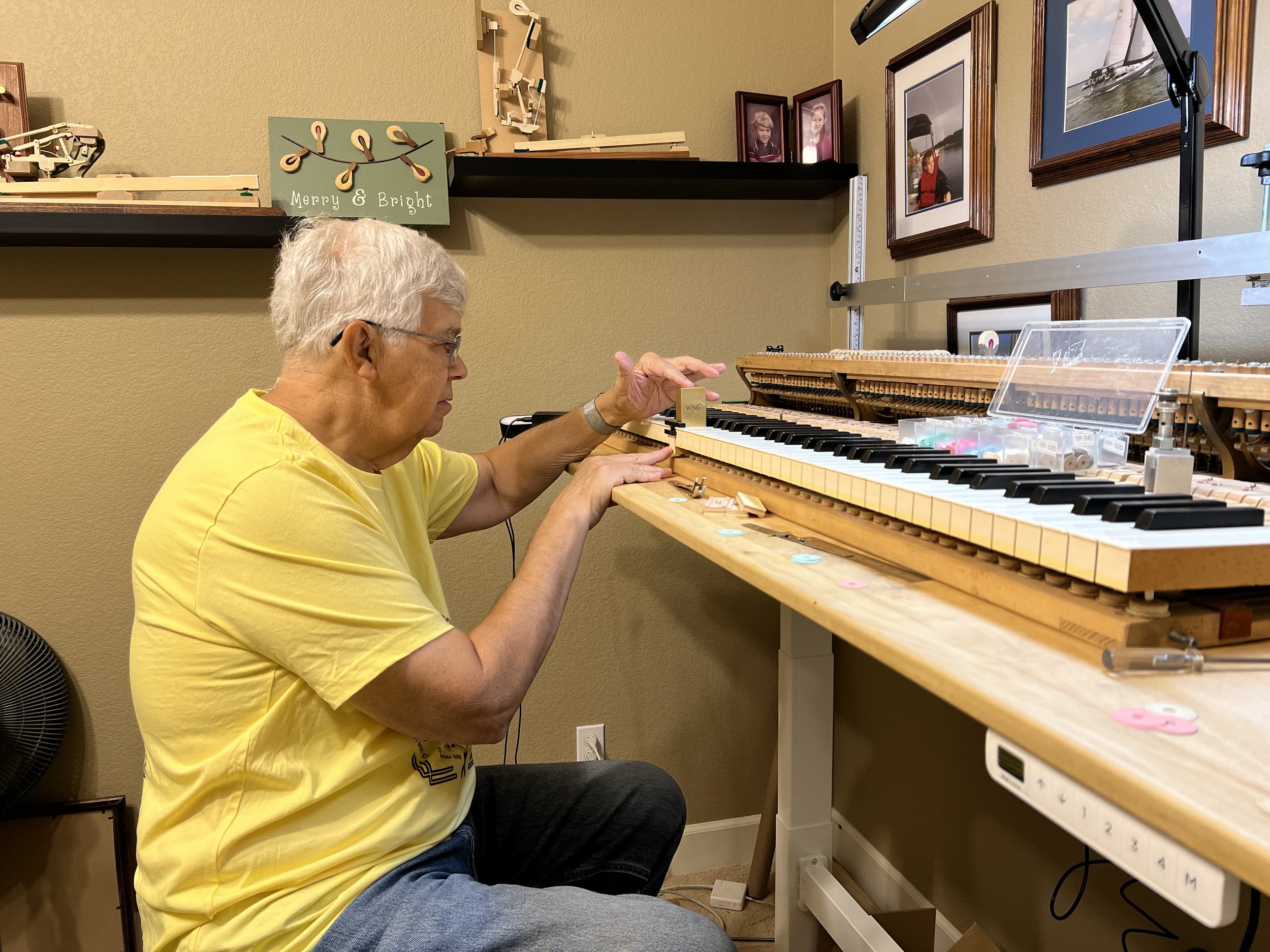
Regulation
One of the most impactful things you can do to your older piano is to regulate the action. A well regulated action allows you to have the most control of how you play and what the music sounds like. For instance, in some situations, on a poorly regulated piano, it is impossible to play quietly. Poorly regulated actions can feel spongy or overly hard to the touch. There are more than a dozen adjustments that can be made to each key that control how it feels and sounds.
When you press a key, the key throws the hammer toward the string but not quite all the way. The inertia then carries the hammer upward and strikes the string. Then it resets for either a fast repetition or back to rest. For every key, the following things are adjusted during the regulation process.
Key height - The distance from the top of the key to the key frame and bed
Key leveling - No keys on the keyboard should be higher or lower than others
Key dip - The distance between the top of they key at rest and the bottom when depressed.
Blow distance - The distance between the hammers at rest and the strings.
Position of the key rail - the distance between the hammer shank and the rail itself
Jack position - The forward or backward position of the jack in the repetition lever window
Set Jack height - The vertical position of the jack in the repetition lever window
Let-off - The distance to the string where the hammer is no longer propelled by the key
Drop - The distance the hammer will drop after striking the string to prepare for repetition
Repetition spring tension - The spring needs to be strong enough but not too strong for the action
Action lubrication - All these action parts rotate on pins that require periodic lubrication
Hammer resurfacing - Over time, the hammers become grooved and hardened and need to be refreshed